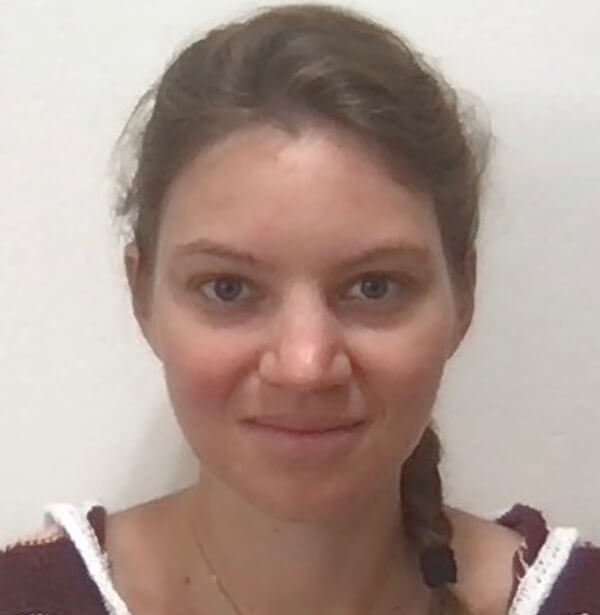
PHOTO/PEXELS, ATHENA.
The Surfside, Florida condo building collapse in June signaled a warning about our buildings: we need to be vigilant and clear about proactively monitoring their health. Structural health is a key area that Assistant Professor Audrey Olivier, of the Sonny Astani Department of Civil and Environmental Engineering, will be researching. This Fall, she will also be bringing a new class.
The class, “Uncertainty Quantification Concepts in Civil and Environmental Engineering,” will introduce students to the field of uncertainty quantification and probabilistic data learning. This aligns with Olivier’s main passion as a researcher: using data to better understand the health of urban systems from buildings to bridges. “My core focus is on how to use data and data analytics to solve some of the problems of civil engineering,” she said.

Audrey Olivier, Assistant Professor in the USC Viterbi School of Engineering. PHOTO/AUDREY OLIVIER.
The course is an introduction for students that Olivier hopes will be part of a larger structures and mechanics program that she is planning to build with other faculty in the department, which could also include a specific course on structural health monitoring.
Uncertainty quantification is important in risk mitigation in terms of urban infrastructure, from ambulance response times to the safety of the spaces in which we work and live. Structural health monitoring is one of Olivier’s key areas of focus. “It’s about using data from a structure to understand if that structure is healthy or if it’s damaged,” she said. “If you can gather enough data from the healthy stages, you can detect changes that indicate deterioration or risk.” The idea, Olivier says, is to use this as a guide for repairs or maintenance to avoid catastrophic failure of the building.
To help support this, Olivier has worked on developing algorithms that can process the data collected more quickly than current models. For a building, the type of data collected might include information on building vibrations, for example. “Every building vibrates in a certain way,” she said. “Changes in the frequency might indicate damage.” Of course, the data grows increasingly complicated in the real world, where conditions like shifts in temperature can also account for data fluctuations.
While data-based models are easier to use, physics-based models help correlate actual behavior of the structure to the data. “An important part of structural health monitoring is not just to detect damage but to do prognosis, predicting what’s going to happen shortly after detecting the damage,” Olivier said.
In her doctoral work, Olivier tried to speed up the learning process using physics-based models, because they are important for the prognosis stage. “When we collect data for the physics-based model,” she said, “We’re trying to learn from this data the parameters of that model, for example stiffness. This type of inverse modeling, where you learn the parameters of the model, are expensive because you have to run the model potentially many, many times to find the right parameter. I developed ways of doing this with fewer calls to the expensive physics-based model.”
Data-based models, however, Olivier said, are important when no physics-based model of the structure is easily available and for real time building assessment, for example following an earthquake, when you want to identify damage that happened right away. “You might want to know if you have to evacuate a building,” she said, “But not have enough time to run a physics-based model. This is where data-based model damage identification becomes very important.”
Olivier’s research is inspired by her curiosity about the randomness of systems. “Earthquakes or wind or even traffic produces these random excitations. I love sitting in this uncertainty and then turning to data analytics to reduce it,” she said. At the same time, she likes the idea of combining traditional studies with new innovations. “I like the mix in my work now of taking a very traditional field—civil engineering, mechanical engineering, those physical rules that have been around forever—and new things like data analytics, machine learning, sensors, Internet of Things, etc.,” she said.
Olivier’s prior research, conducted while obtaining her master’s and doctoral degrees at Columbia University and later working on her post-docs at Johns Hopkins University and Columbia University, focused on how data-based machine learning models can help urban systems work more efficiently and preempt safety risks. Projects included a partnership between Columbia University, the New York City Fire Department and Google using data on ambulance travel times and routes to help optimize emergency response. Her postdoctoral research at Johns Hopkins University focused on developing probabilistic methods for data-based materials modeling. Using data- based models that are less computationally expensive than traditional physics based models facilitates optimization to find new materials with specific properties.
“At the end of the day,” Olivier said, “I’m really interested in how we use data to enhance urban systems and solve problems of civil engineering and mechanics.”
Published on August 30th, 2021
Last updated on August 30th, 2021







